Do you have a question about the Parker D1VW EE Series and is the answer not in the manual?
| Type | Directional Control Valve |
|---|---|
| Voltage | 12 VDC, 24 VDC, 110 VAC, 220 VAC |
| Actuation Type | Solenoid |
| Body Material | Cast Iron |
| Temperature Range | -20°C to +70°C (-4°F to +158°F) |
| Operating Pressure | 350 bar |
| Mounting Interface | NFPA D03 (CETOP 3) |
| Port Size | NG6 |
| Maximum Operating Pressure | 350 bar |
| Seal Material | Nitrile, Fluorocarbon |
| Maximum Flow | 80 L/min |
Introduces the D1VW*EE series directional control valve.
Details explosion proof class (II 2 G c T4 Gb) and operating temperature range.
Emphasizes user's critical role in selection, installation, and use of products.
User must analyze aspects, follow standards, and use provided product information.
Parker Hannifin declares compliance with ATEX Directive 2014/34/EU.
Lists standards like EN 1127-1, EN ISO 4413, EN 13463 series used for conformity.
Details category II 2 G c T4 Gb and operating temperature range.
Lists various proportional and directional control valves compliant with directive.
Explains the D1VW series with explosion-proof solenoids for hazardous environments.
Details size, mounting, ambient temperature, weight, and fluid properties.
Covers duty ratio, frequency, protection class, voltage, current, and power.
Explains the coding for directional control valves and solenoid options.
Details codes for different spool types and their operating positions.
Lists available seal materials and solenoid voltage options.
Table mapping spool types to flow curve numbers for various positions.
Graphical representation of flow vs. pressure drop for different spool types.
Diagrams showing shift limits for DC solenoids based on pressure and flow.
Diagrams showing shift limits for AC solenoids based on pressure and flow.
Provides dimensional drawings for B, E, H, K, C, D valve styles.
Details surface finish requirements and available kits (e.g., BK375, seals).
Explains markings on the name plate: manufacturer, CE, serial number, data.
Covers general safety, depressurization, hot surfaces, and leak checks.
Defines symbols for warranty, damage, hazards, and general information.
Specifies that work must be done by qualified persons, ensuring no explosion risk.
Defines correct use for mineral oil systems and notes warranty exclusions.
Covers technical changes, copyright, and liability for faults like incorrect installation.
Specifies conditions for temporary storage to prevent corrosion and damage.
Details checking contents, handling transport damage, and installation steps.
Refers to specific operating instructions for electrical connections.
Defines deployment limits, ambient conditions, and risks of overheating.
Provides guidance on mineral oil and other fluids, and ignition temperature requirements.
Procedure for bleeding air after startup, oil change, or line opening.
Specifies filter purity class and recommends flushing pipelines.
Details steps for replacing a coil, including checking nameplates and voltage.
Lists essential checks for oil level, temperature, pressure, and component condition.
Step-by-step guide to remove the solenoid coil and related parts.
Step-by-step guide for reassembling the solenoid coil with correct torque.
Emphasizes systematic approach, experience, and checking settings before work.
Table lists malfunctions, possible causes, and remedies for valve operation issues.
Lists directives and standards related to safety in potentially explosive atmospheres.
Details part numbers, voltage, wattage, OHMS, and temperature class for solenoids.
Provides notes on duty, heat dissipation, thermal lagging, and fuse protection.
Chart showing coil dimensions (A, B, C, D, E, F) for different coil sizes.
Lists AC solenoid part numbers, voltage, wattage, and temperature classifications.
Details specific safe use conditions for AC solenoids, including fuse rating.
Provides detailed drawings and critical notes for DC solenoid installation.
Provides detailed drawings and critical notes for AC solenoid installation.
Provides certificate number, manufacturer, and scope of ATEX compliance for solenoids.
Confirms compliance with essential health and safety requirements per Annex II.
Describes solenoids, core tube, cable entry, and type designation breakdown.
Table shows maximum power ratings for solenoids based on temperature and size.
Lists conditions like mounting on specific valve body, no thermal lagging.
References drawings and documents related to the ATEX certificate.
Extends original certificate for variations in design and construction.
Confirms review against EN 60079 standards and minor design changes.
Updates compliance to newer EN 60079 versions and changes marking.
Provides alternative power ratings at 50°C ambient temperature for solenoids.
Details conditions like fuse protection and avoiding thermal lagging.
References drawings related to the latest supplementary ATEX certificate.
Extends certificate for an alternative terminal enclosure with two cable entries.
Details alternative terminal enclosure and conditions for solenoid use.
Provides IECEx certificate number, applicant, and marking for solenoids.
Lists IEC standards and confirms manufacturer's quality system compliance.
Describes solenoids, terminal enclosure, and power ratings table.
Lists conditions for IECEx certification, including heat dissipation and fuse rating.
Lists product category (Ex me) and links ATEX/IECEx certificate numbers.
Statement on IP rating (IP66) and hazardous location suitability for solenoids.
Specifies torque values for electrical connection of the cable gland.
Describes the delivery state of the cable entry (screwed or bagged).
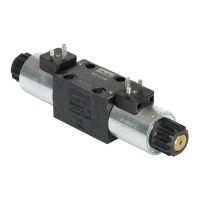
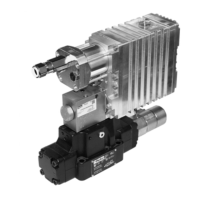

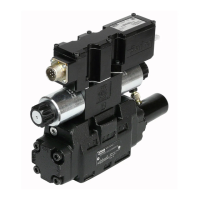


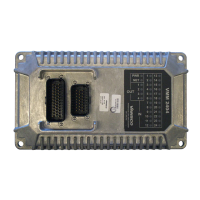
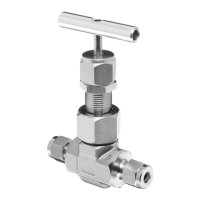
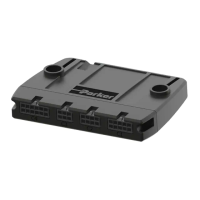

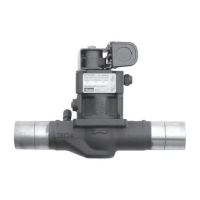

